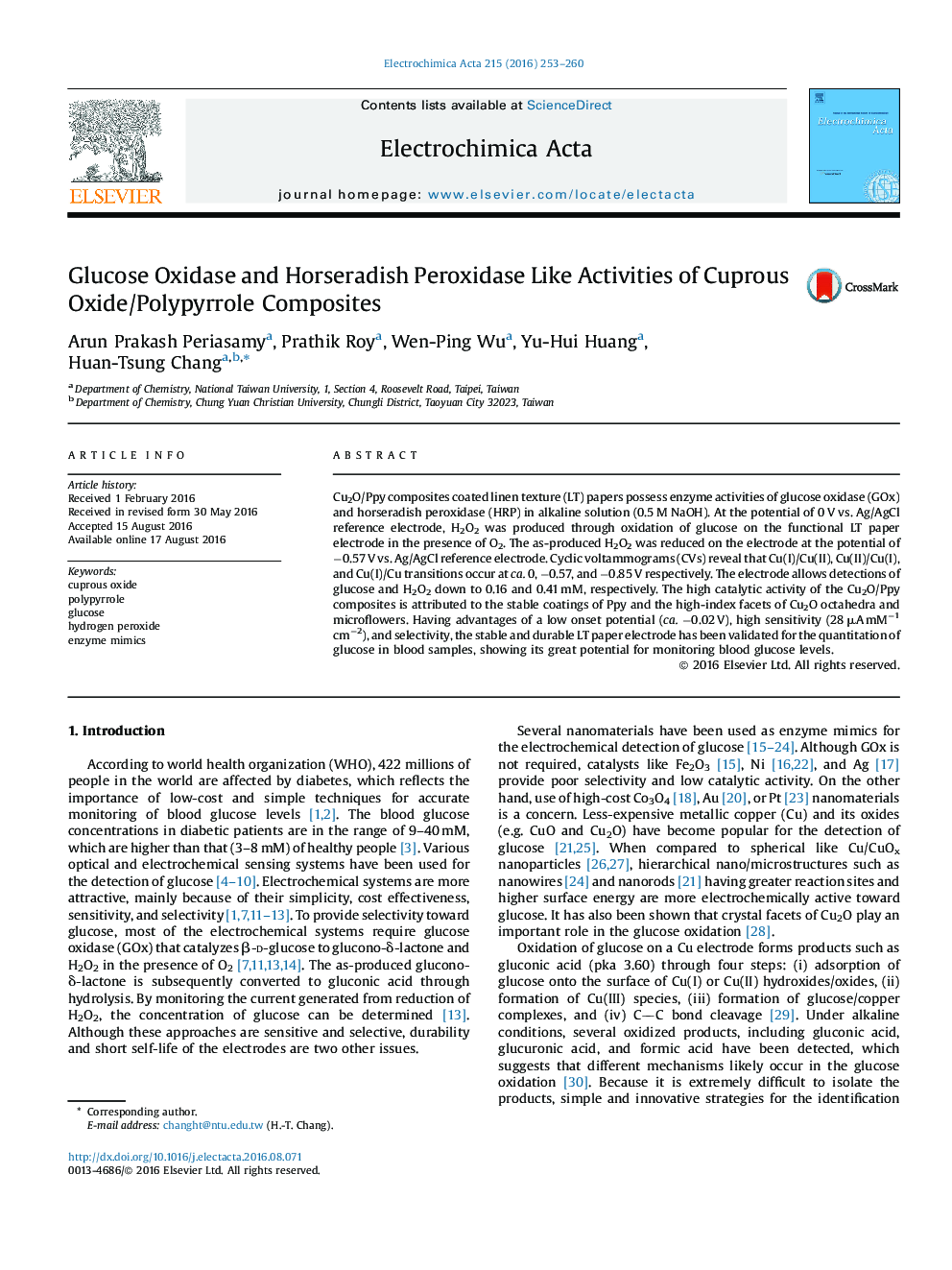| Article ID | Journal | Published Year | Pages | File Type |
|---|---|---|---|---|
| 6473131 | Electrochimica Acta | 2016 | 8 Pages |
â¢Cu2O/Ppy composites mimic activities of glucose oxidase and horseradish peroxidase.â¢Cu2O/Ppy electrode detects glucose at 0 V with low onset potential (â0.02 V).â¢Cu(I)/Cu(II), Cu(II)/Cu(I) and Cu(I)/Cu transitions occur at 0, â0.57, and â0.85 V.â¢The limits of detection for glucose and H2O2 are 0.19 and 0.24 mM, respectively.
Cu2O/Ppy composites coated linen texture (LT) papers possess enzyme activities of glucose oxidase (GOx) and horseradish peroxidase (HRP) in alkaline solution (0.5 M NaOH). At the potential of 0 V vs. Ag/AgCl reference electrode, H2O2 was produced through oxidation of glucose on the functional LT paper electrode in the presence of O2. The as-produced H2O2 was reduced on the electrode at the potential of â0.57 V vs. Ag/AgCl reference electrode. Cyclic voltammograms (CVs) reveal that Cu(I)/Cu(II), Cu(II)/Cu(I), and Cu(I)/Cu transitions occur at ca. 0, â0.57, and â0.85 V respectively. The electrode allows detections of glucose and H2O2 down to 0.16 and 0.41 mM, respectively. The high catalytic activity of the Cu2O/Ppy composites is attributed to the stable coatings of Ppy and the high-index facets of Cu2O octahedra and microflowers. Having advantages of a low onset potential (ca. â0.02 V), high sensitivity (28 μA mMâ1 cmâ2), and selectivity, the stable and durable LT paper electrode has been validated for the quantitation of glucose in blood samples, showing its great potential for monitoring blood glucose levels.
Graphical abstractDownload high-res image (175KB)Download full-size image
